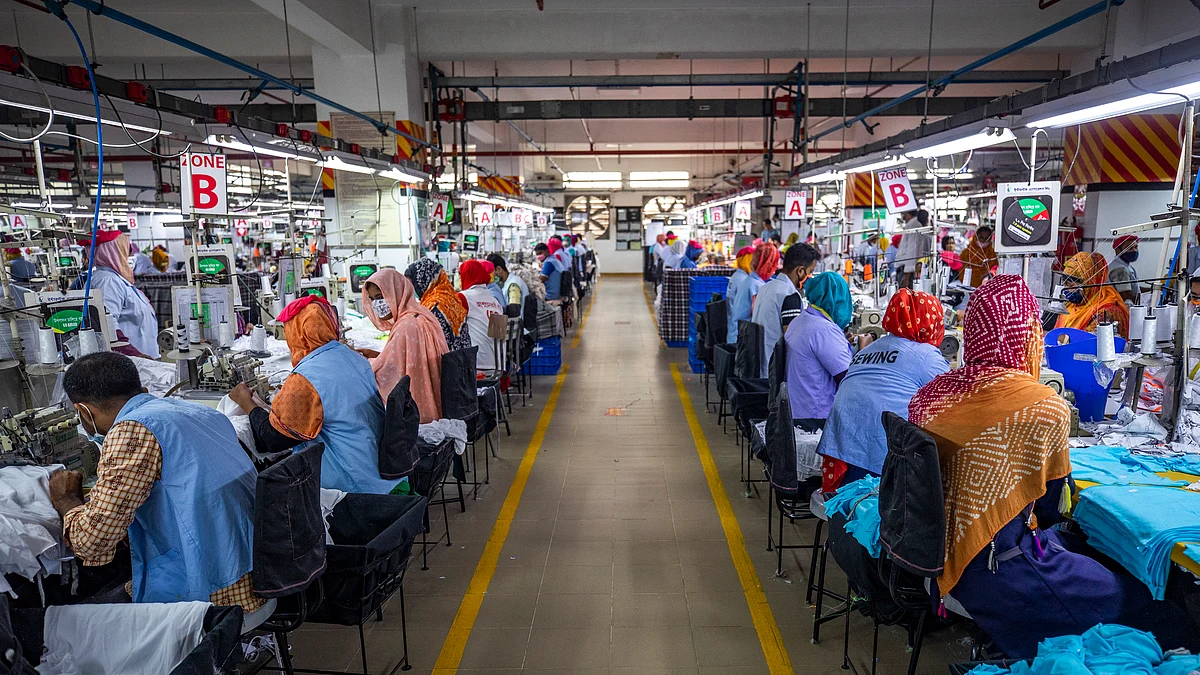Bangladesh basks in middle-income country status
With Bangladesh moving up several steps on economic development ladder, there is new hope in India that the playing field will be more level in terms of trade. But such optimism may be out of place

The UN recently confirmed that Bangladesh has in concrete terms made its long-awaited transition to a middle-income country status, years ahead of the scheduled date in 2026. There has been some welcome reactions from unexpected quarters such as Indian garments exporters and a few Pakistan –based observers, for contrasting reasons.
Among Pakistani garments manufacturers, it used to be the standard argument that Bangladesh as an aspiring least developed country (LDC) enjoyed special concessions from the EU, China and other major importing countries, which gave a built-in advantage to Dhaka when it came to winning export orders in the garments sector. The so-called ‘economic miracle’ was therefore partially subsidised by world trade authorities, went the argument.
In recent times, Pakistani industrialists have been outsourcing part of their export orders to their Bangladeshi counterparts or setting up new units in its former Eastern province. Higher productivity, lower labour costs and a steadier power supply acted as attractive incentives.
As for Indian garment makers, the substantial tariff duty relief given to Bangladeshi products by Delhi made it tough to compete with Dhaka even in India’s domestic markets, especially for the inexpensive varieties enjoying bulk sales. They made several representations to the Government to address their needs.
The GoI some time ago pressed Bangladesh authorities to reduce their tariff on Indian imports, in a bid to ensure a measure of parity. Currently, there is new hope that with Bangladesh moving up several steps on the economic development ladder, the playing field will be more level.
However, such optimism needs to be tempered with caution. Present indications suggest that having graduated from an LDC status to a higher level, Bangladesh is not about to abandon its hard-won identity as an export powerhouse in South Asia anytime soon. If anything, its attraction among major international investors has increased much to the surprise of its regional neighbours.
Reportedly, 40 Japanese-owned industrial units from mainland China and around 20 South Korean enterprises mostly based in Myanmar, have either /or are in the process of --shifted/ relocating their operations to Bangladesh. And not all are garment producing units either. The reasons: the prospect of reduced overhead costs, a trained workforce, good connectivity, a friendly government and political stability. It needs adding that Bangladesh currently competes with Cambodia and Vietnam as the new favoured destination in Asia for international investment.
Its new status as a middle-income country will make it necessary for Dhaka to ensure major economic adjustments involving cost and structural overhauling. Observers feel this could for a time slowdown the country’s spectacular performance in the production of relatively low cost garments.
Major Western importers of Bangladeshi garments in the EU or US/Canada will now be more insistent on ensuring that child labour and working conditions get better. The Garments Producers’ body BGMEA, economists and Dhaka-based policymakers have already begun addressing problems the garments trade may have to face from around 2030 or so, as the special relief provided earlier for LDCs come to an end.
Working conditions in most of Bangladeshi garment producing factories – estimates range from 4500 to 5000 of them -- are far from comfortable, in terms of space per worker, drinking water facilities/ fire prevention methods and so on. The high decibel noise generated is another concern. Several major accidents have claimed hundreds of lives, leading to inquiries and suspension of overseas orders from time to time.
Yet, the importance of garments exports to Bangladesh economy cannot be over emphasized, nor its larger socio-economic impact denied. Of the nearly 30,00,000 people working in the industry (including children in some places, it is alleged), well over 80% are women/young girls. This directly contributes to women empowerment and gender equity.
At present the sector produces around 7% of the total world production and earns over 44% of the aggregate annual export earnings of over $34 billion. The Government has a target of increasing its total exports up to $50 billion in a few years by strengthening the garments sector. There are plans to diversify production by introducing greater variety and produce more high end stuff.
However, the ongoing Covid 19 pandemic and the accompanying shutdowns have slowed down such plans for the time being. How Bangladesh copes with its new status and wards off regional competition will be watched keenly by its neighbours.
(IPA Service)
Views are personal
Follow us on: Facebook, Twitter, Google News, Instagram
Join our official telegram channel (@nationalherald) and stay updated with the latest headlines